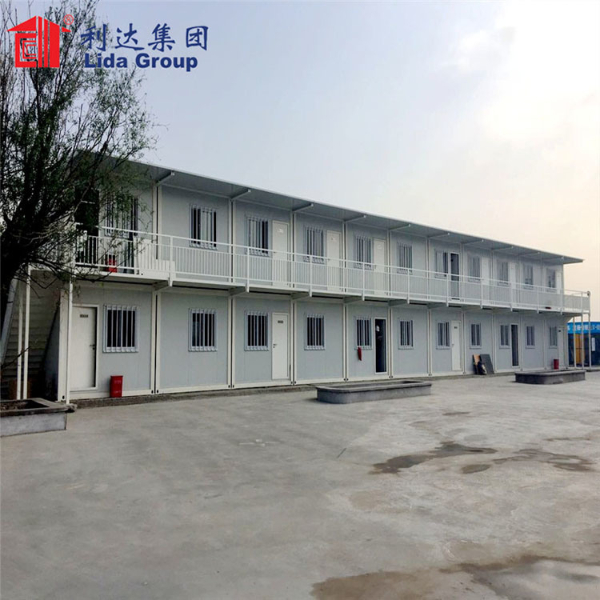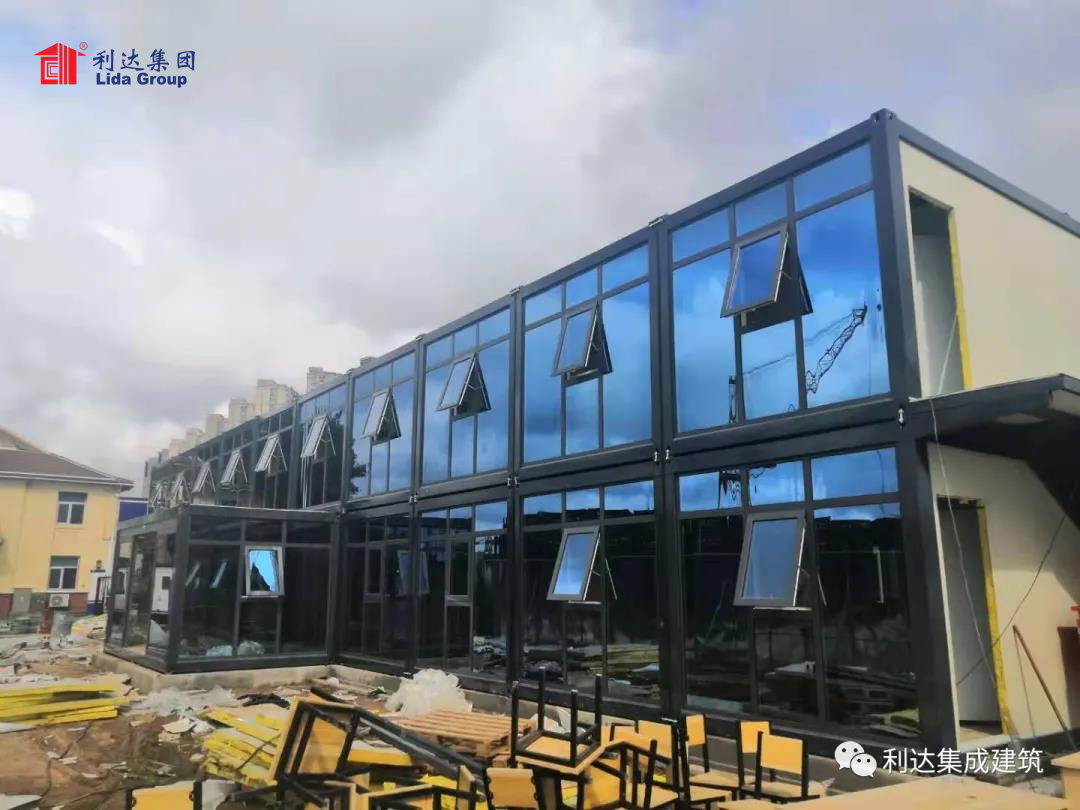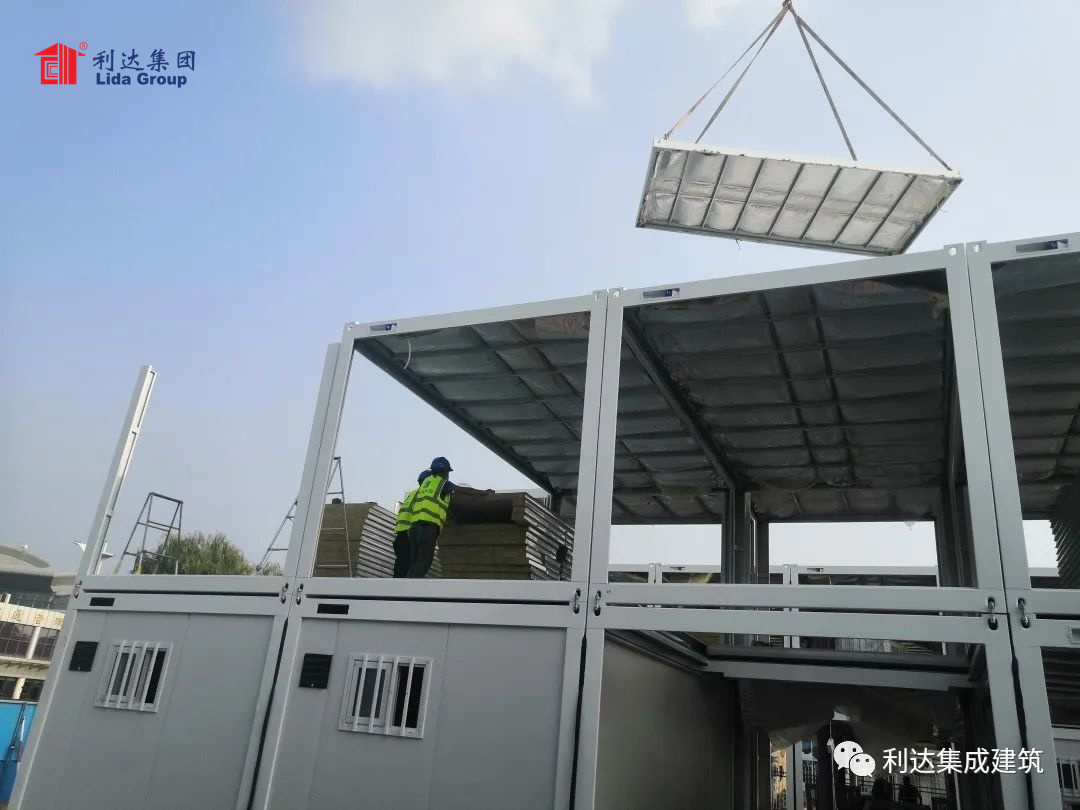High-Quality Welding Container Houses
Introduction
Container houses have gained popularity as a sustainable and cost-effective housing solution in recent years. One crucial aspect that determines the durability and overall quality of these houses is the welding process. Welding plays a vital role in joining the various components of container houses, ensuring structural integrity and longevity. In this article, we will explore the importance of high-quality welding in container house construction, examining the techniques, benefits, and considerations associated with producing top-notch welding container houses.
- Understanding Welding in Container House Construction
a. Welding Process: Welding involves the fusion of metals through the application of heat and pressure, creating a strong bond between the joined materials. In container house construction, welding is used to connect the structural elements, such as the container frames, walls, and roof, ensuring a solid and secure housing structure.
b. Types of Welding: Various welding techniques are employed in container house construction, including arc welding, MIG (Metal Inert Gas) welding, and TIG (Tungsten Inert Gas) welding. The selection of the welding method depends on factors such as the type of metal being welded, the desired strength, and the skill level of the welder.
- Importance of High-Quality Welding in Container Houses
a. Structural Integrity: High-quality welding is essential for maintaining the structural integrity of container houses. Properly welded joints ensure that the components are securely connected, preventing potential weaknesses or vulnerabilities in the structure. This is particularly crucial for container houses, as they may be subjected to various stresses, including wind loads, earthquakes, or transportation.
b. Durability: Welding plays a significant role in enhancing the durability of container houses. Well-executed welds provide a strong and long-lasting connection between the metal components, ensuring that the house can withstand external forces and environmental conditions. High-quality welding minimizes the risk of weld failures, corrosion, or premature deterioration.
c. Safety Considerations: The quality of welding directly impacts the safety of the occupants. Faulty or incomplete welds can lead to structural instability and pose safety risks, such as collapsing walls or roofs. High-quality welding ensures that the container house meets safety standards and provides a secure living environment for residents.
d. Aesthetic Appeal: While functionality and durability are primary concerns, high-quality welding also contributes to the overall aesthetic appeal of container houses. Smooth and well-finished welds create a visually pleasing appearance, enhancing the quality and value of the housing structure.
| item | remark |
| Frame | |
| Steel Frame | 3.5mm,Q235, welding,rust removal,epoxy painting |
| floor support | C100x40x2.0, welding,rust removal,painting |
| fork lift open | 4mm,Q345 |
| Roofing | |
| outer steel sheet | 1.2mm steel sheet, proceed,epoxy painting |
| steel keel | C80x40x20x2.0 |
| insulation layer | 80mm glass fiber, 35Kg/m3 |
| wooden board | 8mm |
| PVC board | 12mm |
| Wall | |
| EPS sandwich panel | 75mm EPS sandwich panel,0.4/0.4mm,12Kg/m3 |
| outer door | light steel door, including door lockers,etc |
| sliding window | 4mm double glass sliding window,with window screen |
| Floor | |
| floor leather | 1.5mm, including glue |
| bamboo board | 15mm bamboo board |
| Insulation | 100mm glass fiber |
| Floor bottom board | 0.5mm |
| Electric unit | |
| common socket | 16A |
| ceiling light | 38W |
| electric cable | three colors |
| switch | |
| distribution board | box+switch+earth leakage protective device |
| Others | |
| lift corner piece | standard parts |
| rainspout | Φ50PVC |
| accessories | self-tapping screw,glue,edge cover,etc |
- Techniques for Achieving High-Quality Welding in Container Houses
a. Skilled Welders: Employing skilled and experienced welders is crucial for achieving high-quality welding in container house construction. These professionals possess the necessary expertise, knowledge, and precision required to execute welds accurately and efficiently.
b. Proper Preparation: Adequate preparation of the welding surfaces is vital to ensure successful welds. This includes cleaning, removing any contaminants, and properly aligning the components to be welded. Proper fit-up and joint preparation contribute to the quality and strength of the welds.
c. Quality Control Measures: Implementing robust quality control measures throughout the welding process is essential. This includes regular inspections, non-destructive testing (NDT) methods, and adherence to industry standards and codes. Quality control ensures that any welding defects or imperfections are identified and addressed promptly.
d. Welding Equipment and Materials: The use of high-quality welding equipment and materials is crucial for achieving top-notch welds in container house construction. This includes selecting appropriate welding machines, electrodes, shielding gases, and consumables that are compatible with the materials being welded.
- Benefits of High-Quality Welding in Container Houses
a. Enhanced Longevity: High-quality welding significantly contributes to the longevity of container houses. Properly welded joints minimize the risk of weld failures, cracks, or structural weaknesses, ensuring that the house remains sturdy and durable over an extended period.
b. Increased Resistance to Environmental Factors: Container houses are exposed to various environmental factors such as moisture, temperature fluctuations, and corrosion. High-quality welding helps create robust joints that are resistant to these elements, preserving the integrity of the structure and reducing maintenance requirements.
c. Improved Energy Efficiency: Well-executed welds contribute to the overall energy efficiency of container houses. Properly sealed joints prevent air leaks, improving insulation and reducing heating or cooling losses. This results in lower energy consumption and increased comfort for the occupants.
d. Cost Savings: Investing in high-quality welding in the construction of container houses can lead to long-term cost savings. The durability and reliability of well-welded structures reduce the need for frequent repairs or replacements, minimizing maintenance and repair expenses over time.
- Conclusion
High-quality welding is a crucial factor in the construction of container houses, ensuring structural integrity, durability, and safety. Proper welding techniques, skilled welders, adherence to quality control measures, and the use of quality materials and equipment all contribute to achieving top-notch welding in container house construction. The benefits of high-quality welding, including enhanced longevity, improved resistance to environmental factors, increased energy efficiency, and long-term cost savings, make it a vital aspect to consider when choosing or constructing a welding container house. By prioritizing high-quality welding, individuals can enjoy a structurally sound, durable, and aesthetically pleasing container house that will transform their living space for years to come.









